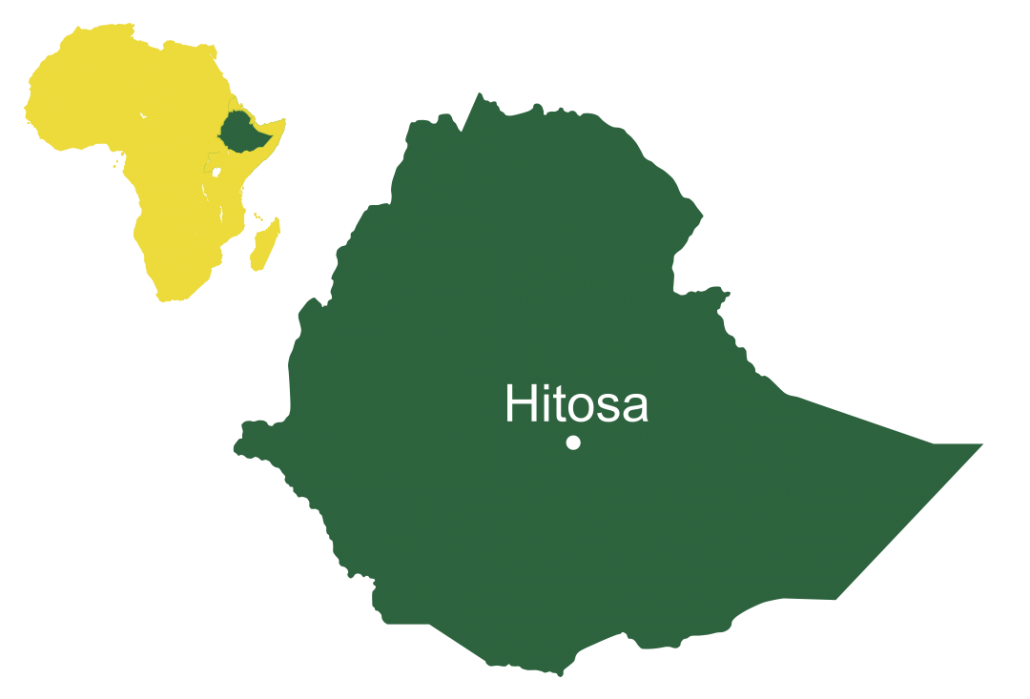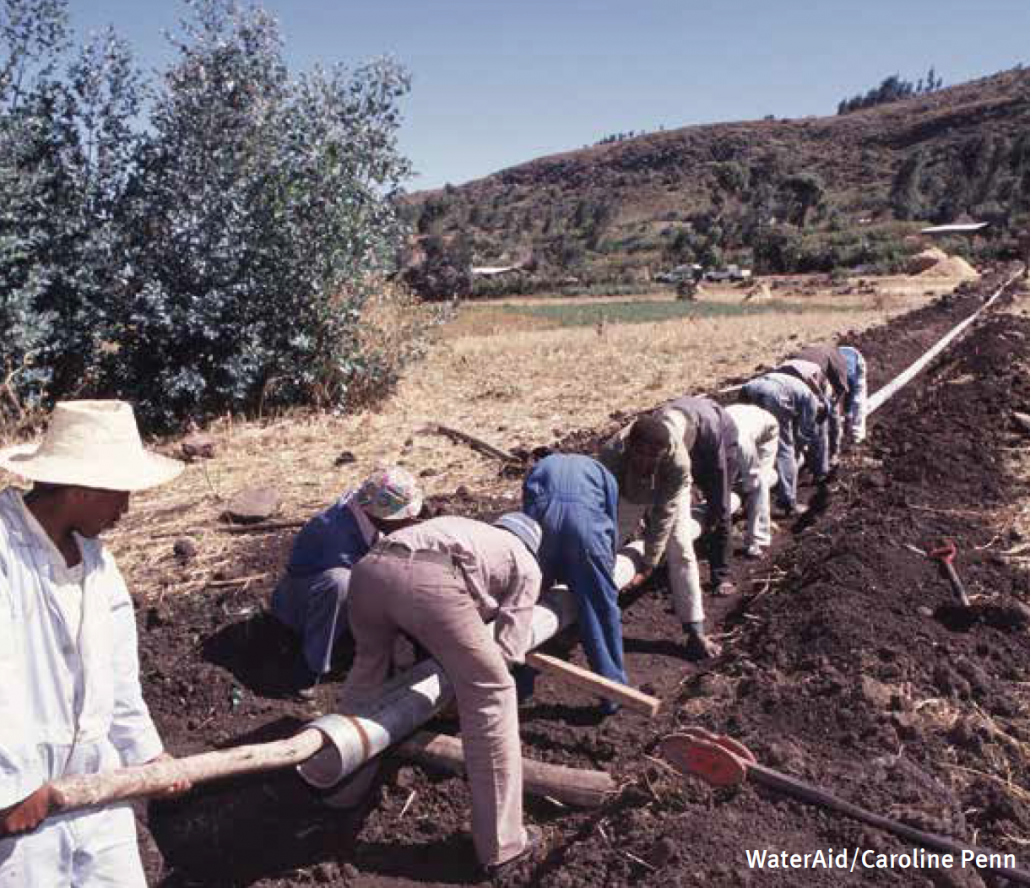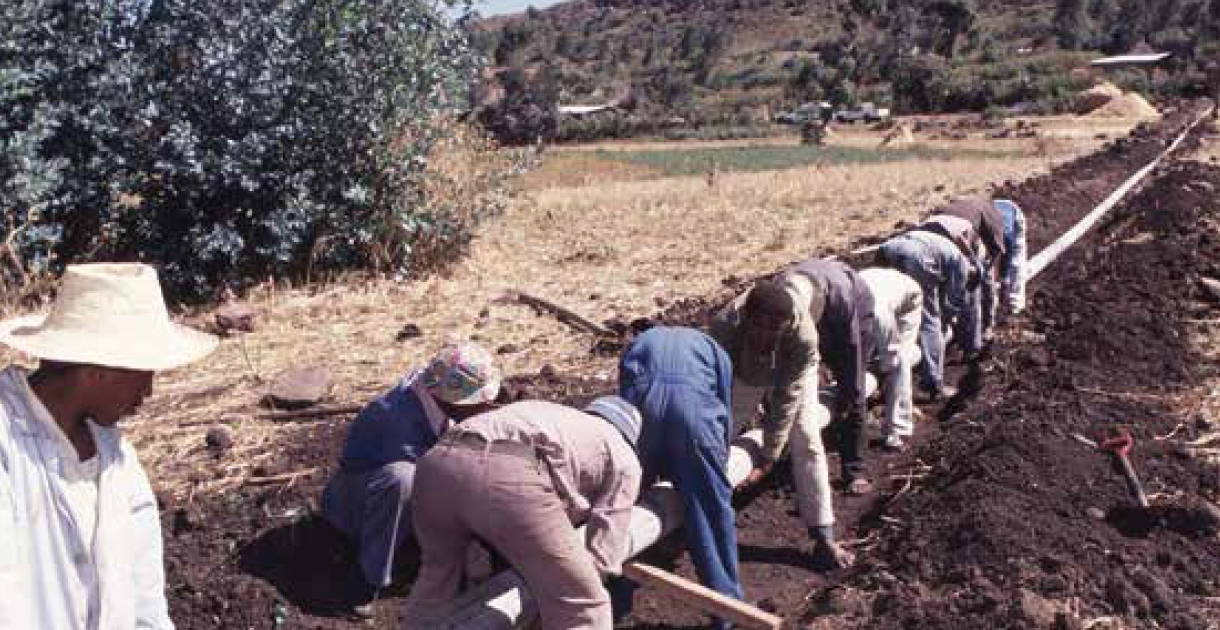Hitosa, Ethiopia – A local water supply scheme in an LIC
Ethiopia is one of the poorest countries in the world. Hitosa is a predominantly rural area 160km south of the capital city of Ethiopia, Addis Ababa. Hitosa has never experienced the famine or drought that seem to be permanently, if undeservedly, associated with the name of Ethiopia. Indeed, the fertile soil and high rainfall that Hitosa enjoys have made it one of the most productive and wealthiest weredas (districts) in the country, regularly producing bumper harvests that help to feed less well-endowed areas. Until recently, however, the vagaries of geography meant that Hitosa also suffered such an acute shortage of drinking water that some people had to walk up to 50km to fetch it.

A map to show the location of Hitosa
To overcome the water shortage, a solution, with support from WaterAid, was found in the form of a gravity-fed water supply scheme. The gravity-fed water scheme, launched in the 1990s, pipes freshwater 140km from Mount Bada, 4000m above sea level, to 100 tap stands in Hitosa. The solution is appropriate to the level of community resources available for operation, maintenance and management.

Gravity-fed water scheme in Hitosa
Why did Hitosa need a local water supply scheme?
There are a number of reasons why Hitosa needed a local water supply scheme including:
- there is limited water in Hitosa as it is located on hot, dry plains
- water was collected from seasonal rivers
- collecting water was time-consuming and has a negative impact on economic opportunities
- annual rainfall in the area is low
- the average annual temperature is 25°C, with high levels of evaporation
What are the successes of the Hitosa local water supply scheme?
- The scheme was completed on time and on budget
- Reliable and safe water is now provided to over 65,000 people
- The safe water is made available to households using standpipes and is used by farmers to irrigate fields of wheat and barley
- The project is managed by the local community
- Time spent collecting water has significantly decreased and new businesses such as cattle fattening have become established
- The small access charge is reinvested into the infrastructure
- There has been no corruption or misuse of funds
- Through re-investment the system has been expanded, adding 88km of pipeline and an additional 43 public taps
- There are around 500 new domestic connections to the scheme per year
- 107 people are permanently employed
What are the problems of the Hitosa local water supply scheme?
- The scheme will be too expensive to replace after its 30-year lifespan
- There has been no education about hand sanitation and hygiene around the standpipes
- Tap hygiene is poor and the risk of contracting a disease from standpipes is high
- Agriculture is now using an excessive amount of water
- In-migration has occurred due to the regular water supply so the scheme now supplies water to more than 65,000
- There is increasing pressure on the scheme’s sustainability
Related Topics
Use the images below to explore related GeoTopics.



